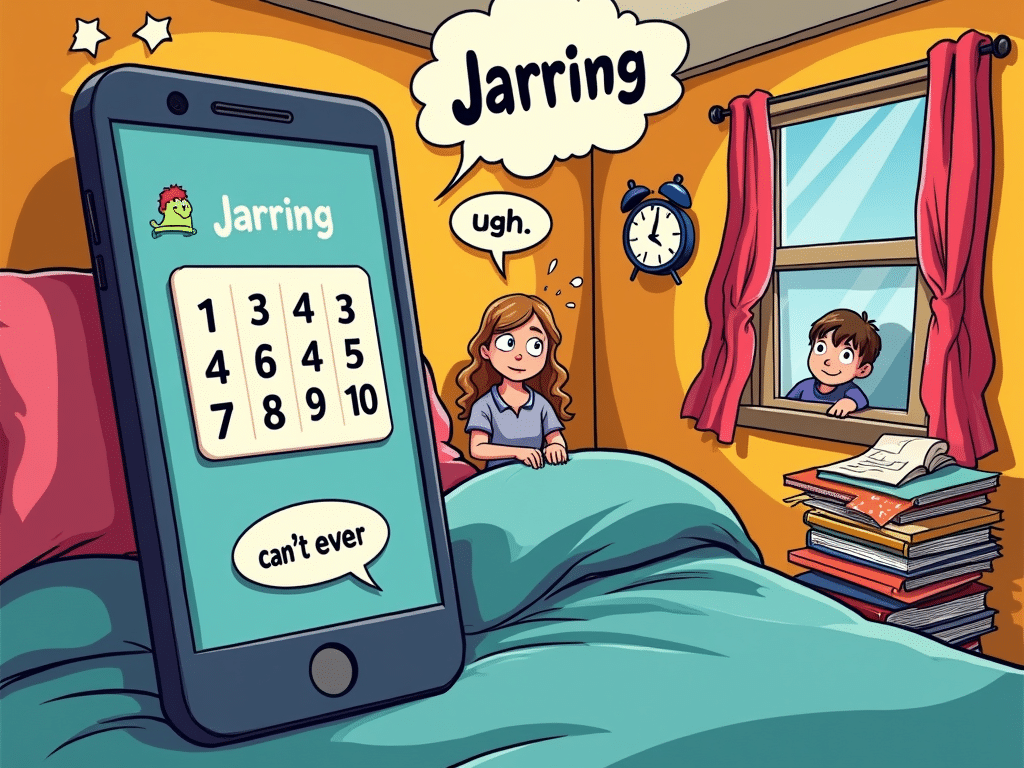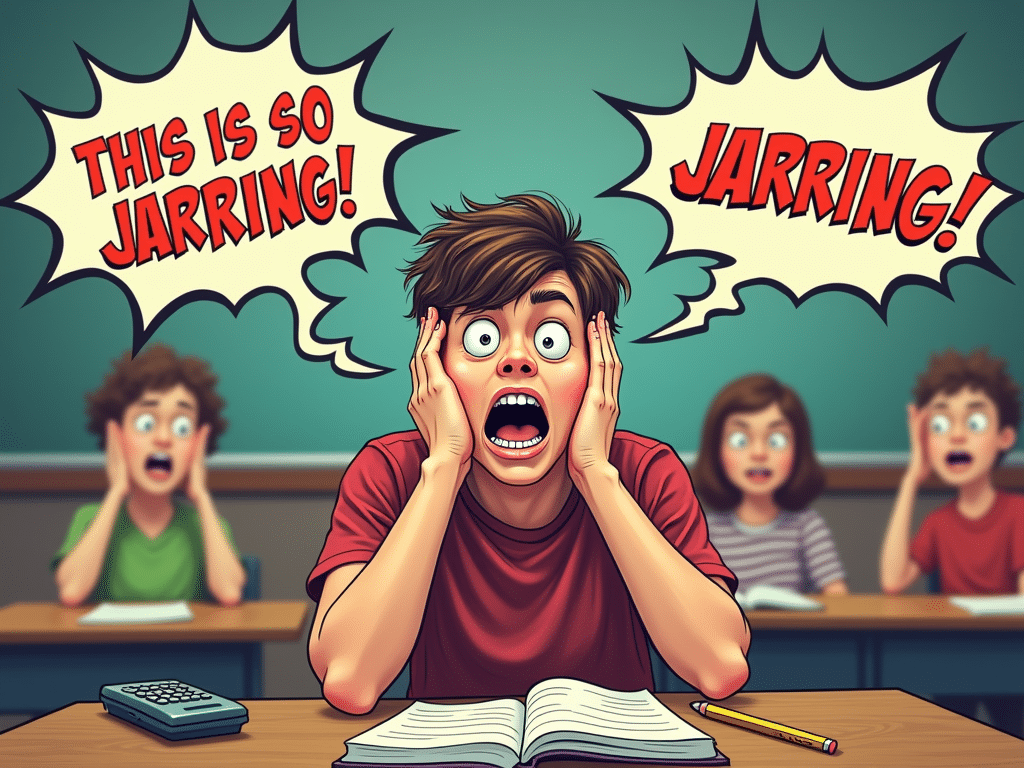The term jarring has become increasingly popular in modern slang, describing something that’s unexpectedly shocking, annoying, or disruptive. Whether you’re scrolling through social media or chatting with friends, you might come across this term when people describe uncomfortable or surprising situations.
| Usage | Meaning | Example |
|---|---|---|
| Primary | Shockingly disruptive | “That plot twist was jarring” |
| Secondary | Annoying or irritating | “These constant notifications are jarring” |
| Casual | Unexpectedly uncomfortable | “The conversation got jarring real quick” |

Jarring Meaning: Breaking It Down
Jarring comes from the word “jar,” meaning to disturb or produce a harsh sound. In modern slang, it’s evolved to describe anything that disrupts your peace or catches you off guard in an unpleasant way.
How Jarring is Used in Text
When texting or posting on social media, people use “jarring” to express their reaction to:
- Unexpected plot twists
- Awkward situations
- Unpleasant surprises
- Disruptive changes
Common Ways to Use Jarring
- Describing Situations:
- “The ending of that show was so jarring!”
- “Three exams in one day? That’s jarring.”
- Expressing Feelings:
- “The sudden silence was jarring”
- “This new update is kinda jarring ngl”
Also read: Popular Gen Z Phrases
Using Jarring in Different Contexts
| Context | Example Usage | Meaning |
|---|---|---|
| Social Media | “This tweet is jarring” | Shocking or controversial |
| Daily Life | “The noise was jarring” | Disruptive or harsh |
| Reactions | “That’s jarring tbh” | Unexpectedly uncomfortable |
When to Use Jarring

The term fits best when describing:
- Unexpected changes
- Uncomfortable situations
- Harsh contrasts
- Disruptive events
Also read: KIK Meaning
Social Media Platform-Specific Usage 🌟
TikTok and Instagram
When you see “jarring” on these platforms, it’s often used to describe:
- Unexpected video transitions
- Controversial content
- Dramatic plot twists
- Sudden changes in music or sound
Twitter/X Usage
On Twitter, “jarring” frequently appears in:
- Quote tweets expressing shock
- Reactions to news
- Commentary on trends
- Discussion of media content
Similar Terms and Alternatives
| Term | Meaning | When to Use |
|---|---|---|
| Shook | Extremely surprised | Less negative connotation |
| Pressed | Annoyed or bothered | More about frustration |
| Salty | Bitter or upset | More about attitude |
| Heated | Angry or frustrated | More intense reaction |
When Not to Use Jarring
Avoid using “jarring” in these situations:
- Professional communications
- Formal writing
- Positive experiences
- Light-hearted conversations
Common Phrases Using Jarring

- “That’s kinda jarring”
- “The vibes are jarring”
- “Jarring behavior fr”
- “This is mad jarring”
Tips for Using Jarring Properly
- Context Matters
- Use it for genuinely surprising situations
- Consider your audience
- Match the tone of the conversation
- Alternative Options
- For mild situations: “weird” or “strange”
- For serious situations: “concerning” or “troubling”
- For casual use: “wild” or “crazy”
Final Thoughts
Remember that “jarring” is a strong term that implies something is notably disruptive or shocking. Use it thoughtfully and consider whether a lighter alternative might work better in your situation. The key is matching the intensity of the word to the situation you’re describing. 😬
Also read: 💜 Purple Heart Emoji Meaning
Common Mistakes to Avoid

- Overuse
- Don’t use it for minor inconveniences
- Save it for truly shocking moments
- Avoid making it your go-to reaction
- Wrong Context
- Don’t use it for positive surprises
- Avoid it in professional settings
- Keep it out of formal writing
Stay aware of your audience and the situation when using this term. When in doubt, opt for a milder alternative! 🎯







